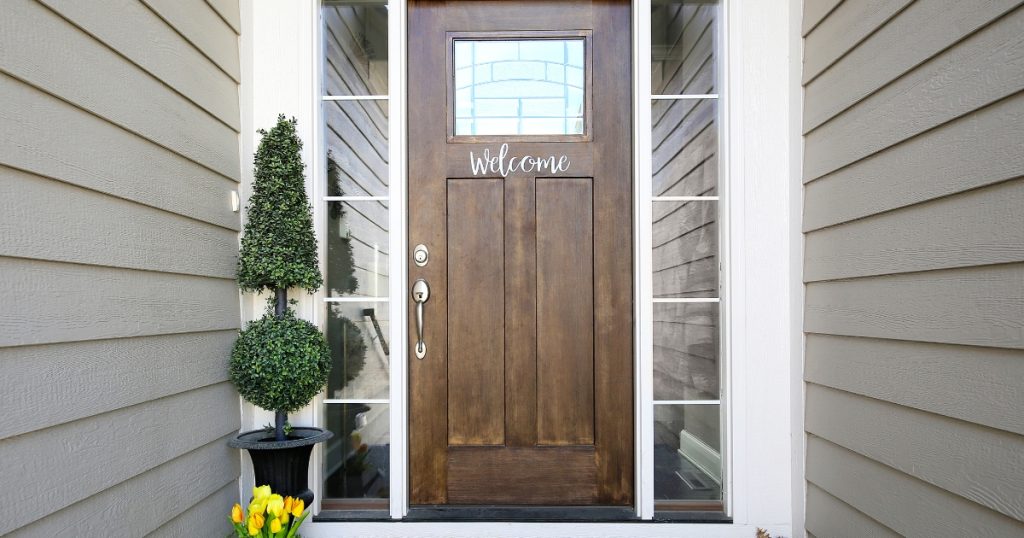There’s no denying that a non-functional front door lock can be a significant inconvenience, especially when you’re in a hurry or returning home after a long day. Not only is it frustrating, but it can also compromise your home’s security.
If you find yourself in this predicament, don’t worry – this comprehensive guide will provide you with four tips on how to extract keys fast and get your front door lock working again.
Additionally, we’ll explore the common causes of front door lock malfunctions and preventive measures to avoid future issues.
What Causes Front Door Locks to Malfunction?
Before diving into the four tips for extracting keys quickly, it’s essential to understand the common reasons behind front door lock issues. By identifying the root cause, you can address the problem more effectively and prevent it from recurring.
Worn-out Key
One common reason for a non-functional front door lock is a worn-out key. Over time, the ridges and grooves on the key can wear down, making it difficult to align with the lock’s internal pins. As a result, the key may not turn correctly or may get stuck inside the lock.
Damaged Lock
A damaged lock can also lead to a malfunctioning front door lock. Locks can become damaged due to wear and tear, corrosion, or even tampering. A damaged lock may not engage properly with the key, causing it to stick or refuse to turn.
Jammed Key
A key can become jammed in a lock for various reasons, such as debris or foreign objects inside the lock, a bent key, or improper insertion. In these cases, the key may not turn, or it may be challenging to remove from the lock.
Weather-related Issues
Weather can also impact a front door lock’s functionality. For instance, in colder climates, the lock mechanism can freeze, causing it to become stuck. On the other hand, in hot and humid conditions, the door and lock components can expand, leading to a misaligned or tight-fitting lock.
4 Tips on How to Extract Keys Fast
Now that we’ve identified some common causes of front door lock issues, let’s explore four tips on how to extract keys fast and get your lock working again.
Lubricate the Lock
Lubricating the lock can help dislodge a stuck key and ease the lock’s operation. Use a graphite-based lubricant or silicone spray, as these are less likely to gum up the lock or attract dirt.
Avoid using oil-based lubricants or WD-40, as they can attract dust and grime, worsening the problem.
To lubricate the lock, spray the lubricant directly into the keyhole. Then, gently insert and remove the key several times to distribute the lubricant evenly within the lock mechanism.
This can help free the key if it’s stuck or facilitate smoother operation if the key is difficult to turn.
Use Pliers or Tweezers
If your key is partially protruding from the lock, you may be able to extract it using pliers or tweezers. Make sure to use needle-nose pliers or flat-nosed tweezers, as these tools provide better grip and control.
Carefully grip the exposed portion of the key with the pliers or tweezers, and apply gentle, steady pressure to pull the key straight out. Avoid twisting or bending the key, as this can cause further damage to the lock.
Apply the Tap and Pull Technique
The tap and pull technique can be an effective method for extracting a stuck key. You’ll need a small hammer or the handle of a screwdriver for this method.
First, insert the key into the lock as far as it will go. Then, gently tap the end of the key with the hammer or screwdriver handle.
This can help realign the lock’s internal pins, allowing the key to turn or be removed more easily. As you tap the key, try to turn it or pull it out gently.
Utilise a Broken Key Extractor Tool
A broken key extractor tool is a specialised instrument designed to remove broken keys from locks. These tools are usually available at hardware stores or online and can be an invaluable addition to your toolbox.
To use a broken key extractor tool, insert it into the lock alongside the broken key piece. Then, gently manoeuvre the tool to hook onto the key fragment. Once the tool is securely hooked onto the broken key, apply steady pressure to pull the key fragment out of the lock.
Preventive Measures to Avoid Lock Malfunctions
To minimise the chances of front door lock issues, consider implementing the following preventive measures:
- Regular Maintenance
Perform regular maintenance on your locks by lubricating them with a graphite-based lubricant or silicone spray every six months. This will keep the lock mechanism operating smoothly and help prevent key jams.
- Key Care
Take care of your keys by ensuring they are clean and free from debris. Avoid using worn or damaged keys, as these can cause lock issues or become stuck. Make duplicates of your keys before they become too worn to prevent future problems.
- Upgrade Your Lock
Consider upgrading your front door lock to a high-quality, modern lock system. Modern locks often feature more robust materials, better resistance to wear and tear, and improved security features, reducing the likelihood of lock malfunctions.
When to Call a Professional Locksmith
While the tips outlined above can help you extract keys and address common front door lock issues, there may be situations where professional assistance is necessary.
If you’re unable to extract the key or the lock remains non-functional after trying the methods above, it’s time to call a professional locksmith.
A skilled residential locksmith can assess the issue, extract the key, repair or replace the lock, and provide guidance on avoiding future lock problems.
Conclusion
A malfunctioning front door lock can be both frustrating and concerning, but with the right knowledge and tools, you can address the issue quickly and efficiently.
By understanding the common causes of lock issues and implementing the four tips outlined above, you can extract keys fast and get your front door lock working again.
Don’t forget to maintain your locks regularly and upgrade to a modern lock system to minimise future issues.
And remember, when in doubt, it’s always best to call a professional locksmith to ensure your home remains safe and secure.

